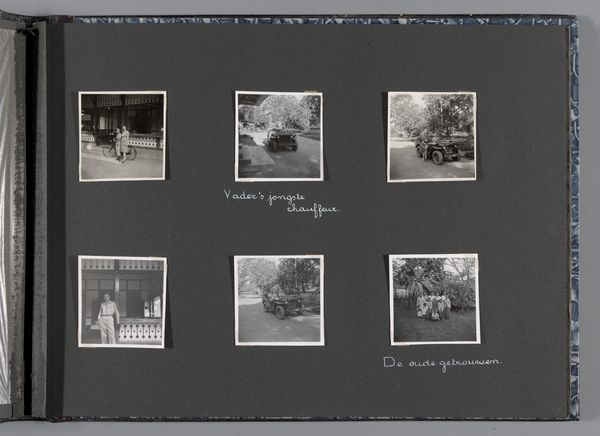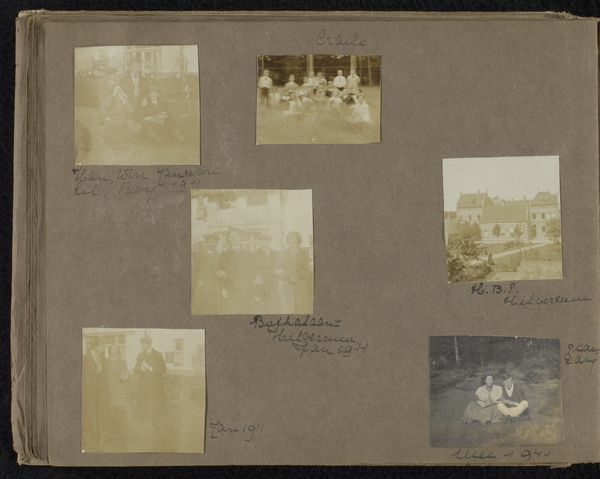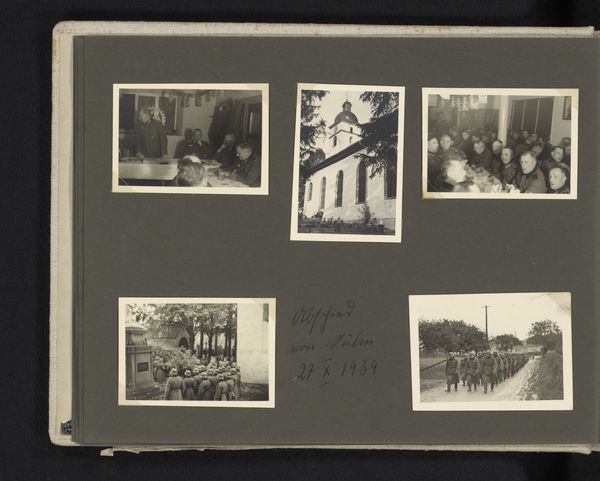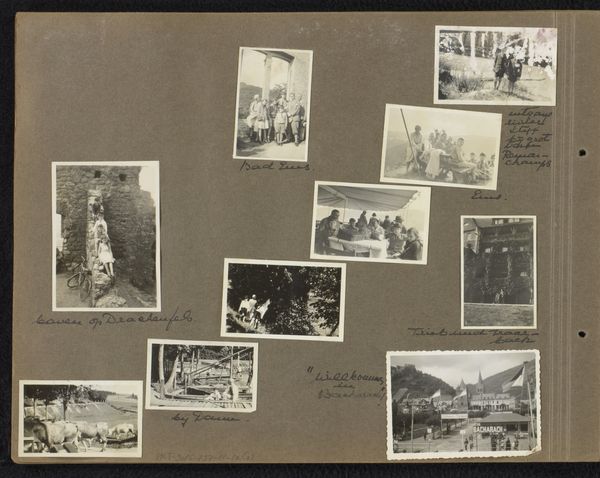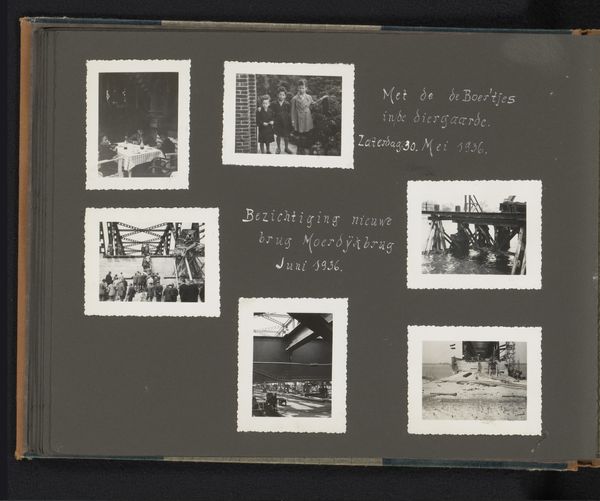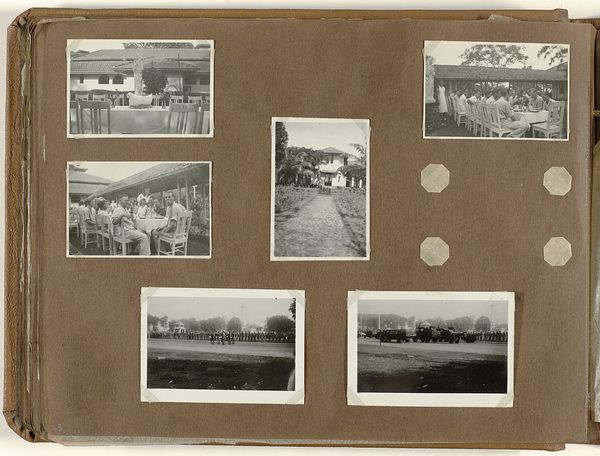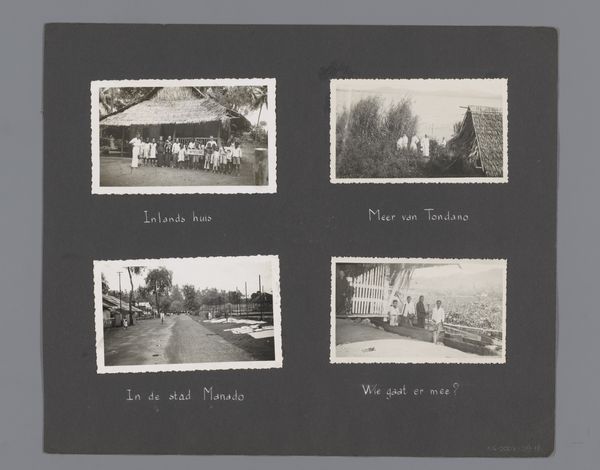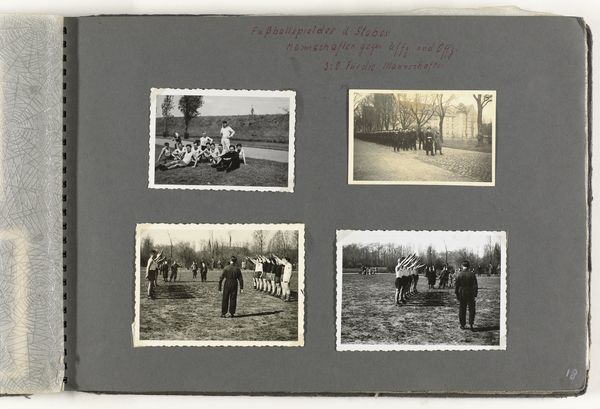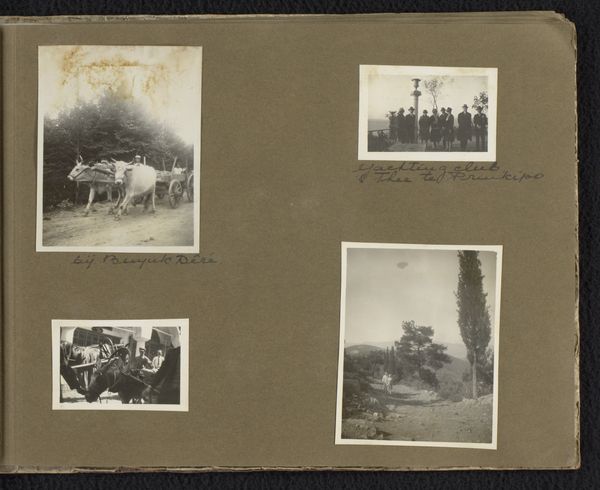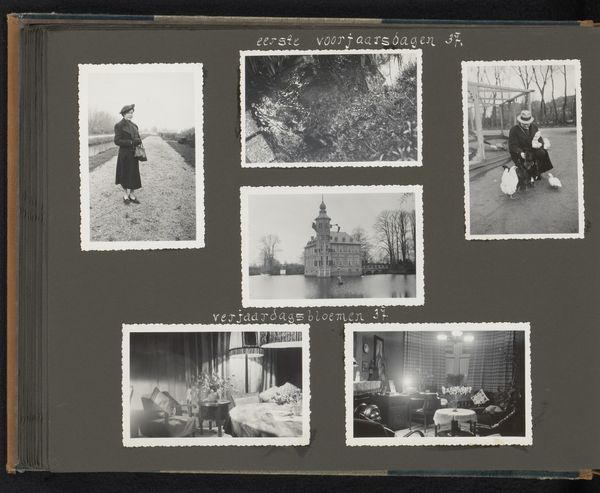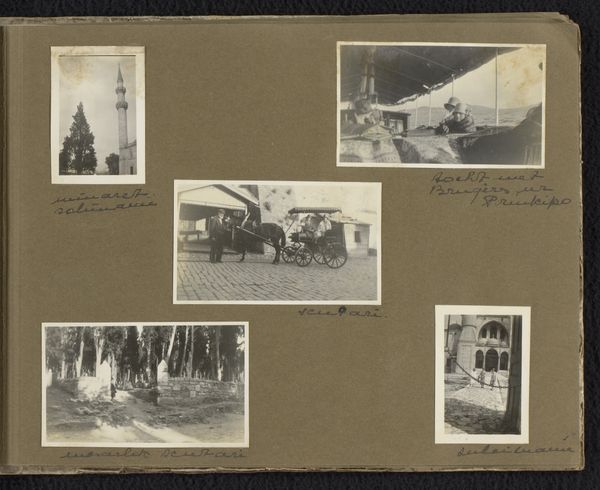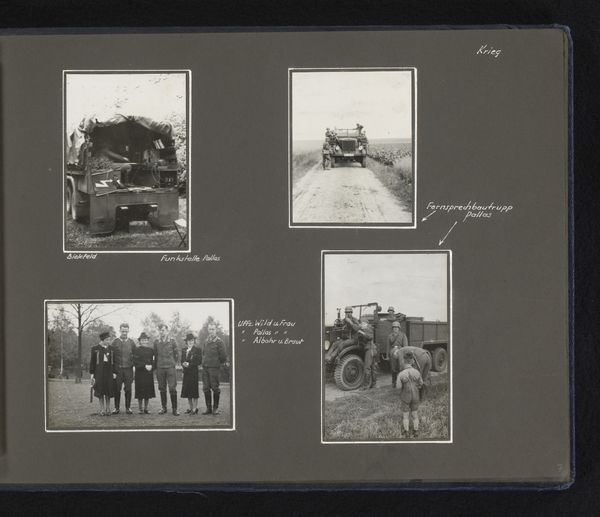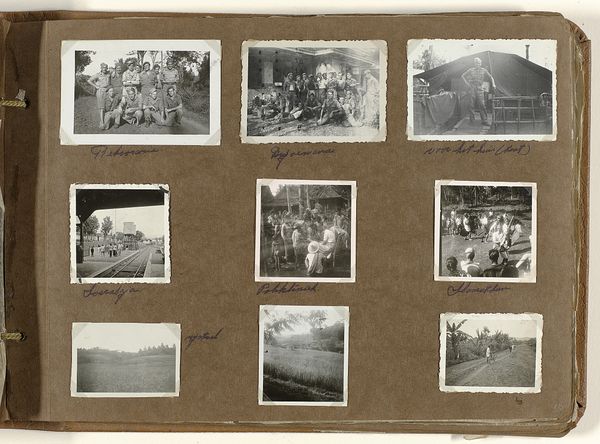
print, photography, gelatin-silver-print
# print
#
landscape
#
indigenism
#
street-photography
#
photography
#
gelatin-silver-print
Dimensions: height 267 mm, width 312 mm
Copyright: Rijks Museum: Open Domain
Curator: This gelatin-silver print, simply titled "Handel in kopra" or "Trade in Copra," offers us a fascinating visual record from the 1930s. It seems like a page from a photo album, holding four different views. What strikes you first about this piece? Editor: The grayscale palette lends an immediate sense of historical weight, a certain nostalgia. The composition, broken into those four distinct windows, each offering what looks like scenes from daily life. There is some central concept that joins these compositions. Curator: Indeed. Notice how each photo panel features coconut processing at a different stage: harvest, transport, drying, and finally, the loading for export. The formal repetition, with each mini-landscape echoing the others, speaks to a cycle, a structured system. The visual grammar, from the placement of each photo to its light, creates a very intentional viewing experience. Editor: I find myself drawn more to what is represented. Oxen, carts, laborers – all clearly integral to the copra trade. One photo highlights drying racks, packed copra. I think that these visual components provide materialist undertones regarding colonialism, labor, and economic exploitation. How do you interpret these visual symbols? Curator: The repetition does, indeed, give us insight. It reinforces the structured exploitation through each stage. But formally, the light is crucial. How the light drapes, almost evenly distributed, across all images brings unity, and makes a grid between all the images; it reinforces the artist's intention to offer us a view, almost anthropological, from every corner of this market. Editor: But the materiality of copra, a commodity extracted from the land and people...we see here that even a beautiful print, with all its intentional light, captures an historical imprint: we have to also remember the social implications of this "structured system." Curator: An interesting note, although its structural and narrative qualities do not lose importance! Ultimately, "Handel in kopra" manages to be both documentary and subtly expressive, revealing as much through the way it captures the world as through what it depicts of it. Editor: And for me, it acts as a stark visual prompt, pushing us to reflect on labor systems inherent in global economies then and now. I find the focus on commodity revealing of the exploitation of local labor for global profit.
Comments
No comments
Be the first to comment and join the conversation on the ultimate creative platform.
